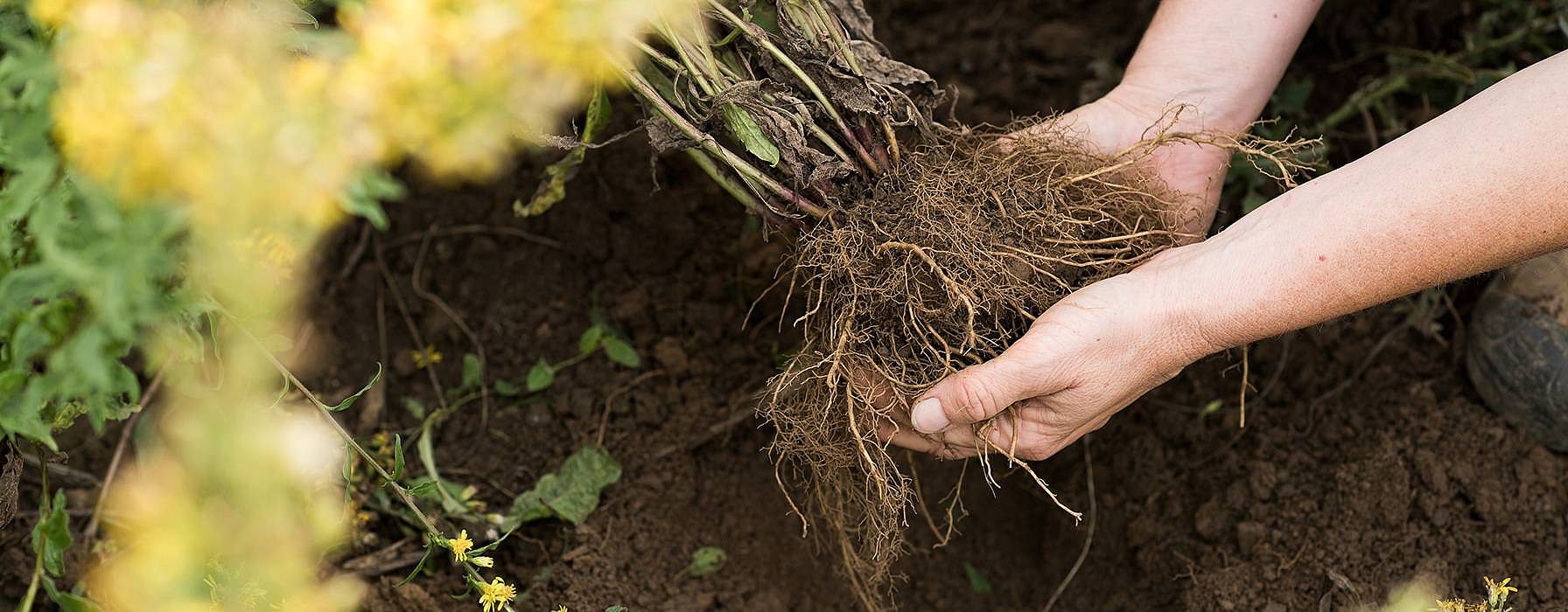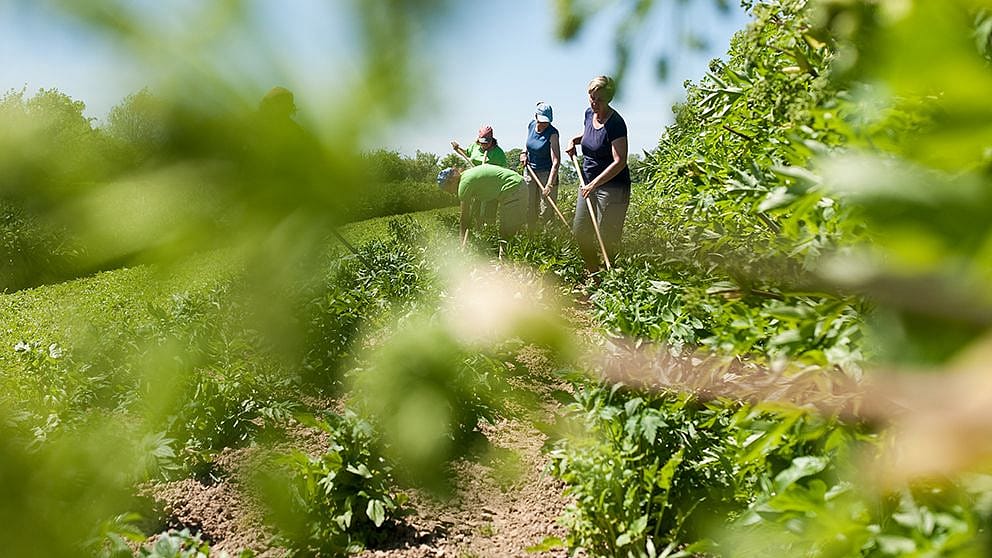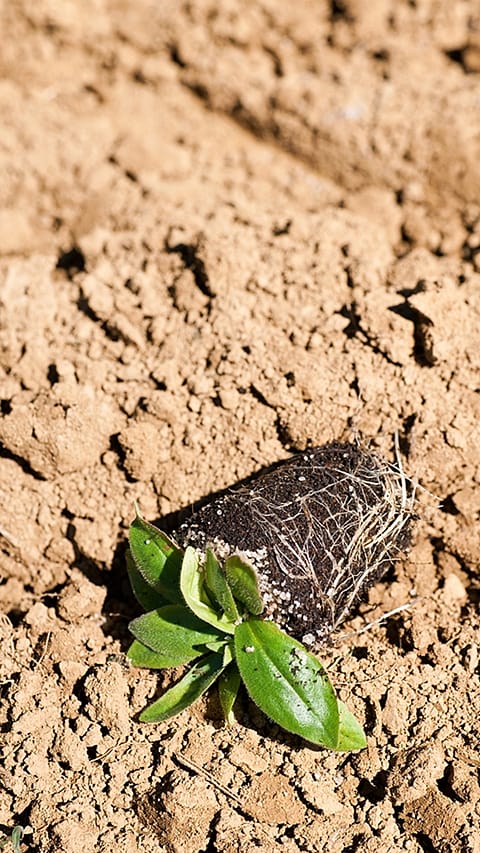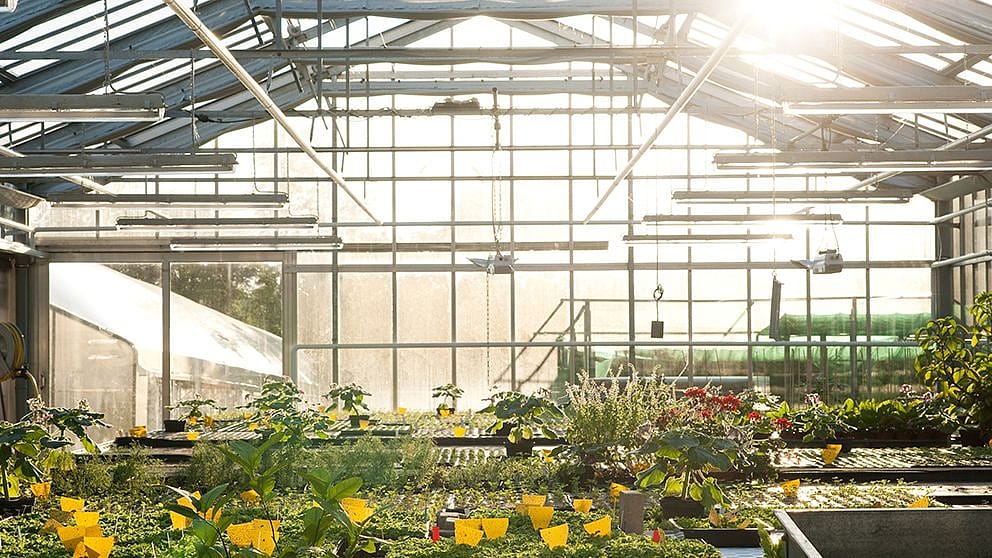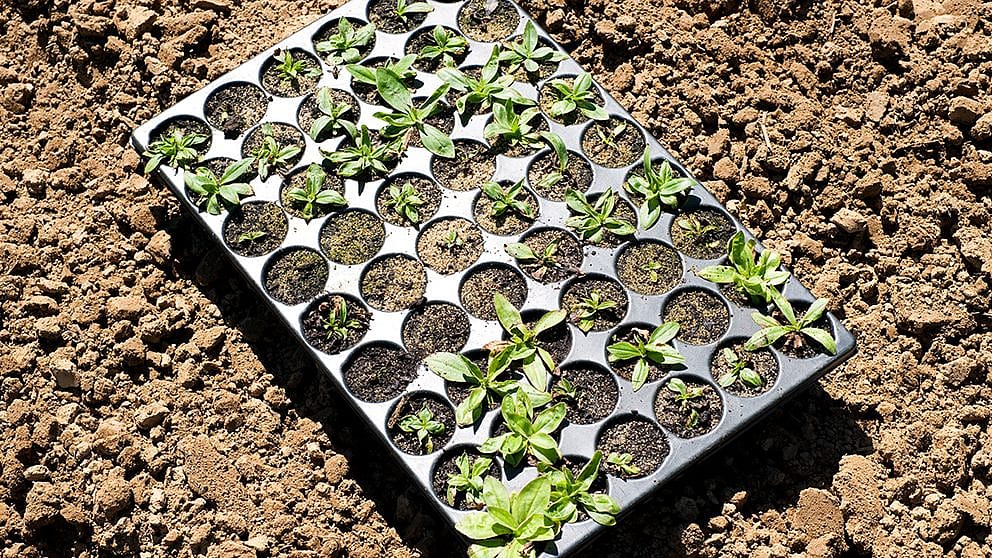Our soils – the most diverse habitat on earth
Why soils are a resource we must protect
The soils of the earth are a highly complex, living ecosystem and, after the oceans, the largest carbon storage on the planet. They filter our rainwater and provide drinking water – without their power, there would be no food. Intact soils are the prerequisite for healthy life.
Soils: Essential for humans and nature
Healthy soils are indispensable for humans and nature for various reasons.
Food Production
Agriculture and thus the production of food cannot function without healthy soils: They provide nutrients for plants, which are the basis of our diet.
Water Quality
Soils play a crucial role in the filtration and purification of water. Before it reaches groundwater sources, they help remove pollutants and impurities.
Carbon Storage
As an important carbon storage, soils contribute to the reduction of greenhouse gases and thus support climate regulation.
Biodiversity
Insects, fungi, bacteria, and other organisms: Soils are home to myriad living beings. This biodiversity is a key factor in maintaining ecological balance and the health of our entire ecosystem.
Erosion Protection
Healthy soils are less susceptible to erosion: Their structure is more stable, and valuable topsoil layers are not easily eroded by wind and water.
Our soils – a world of their own
In a handful of soil, more living beings exist than humans on the entire Earth. Nearly two-thirds of all known species worldwide live in the soil: This diversity forms a foundation of life. If diversity decreases here, entire food chains are at risk of collapsing – without microorganisms, earthworms, or insects, birds and mammals also disappear. All microorganisms, animals, fungi, and plants residing in the soil form a healthy, productive ecosystem through a complex food web and build humus.
Humus-rich soils, in turn, are more resistant to wind and water erosion. Their pores, channels, and cavities for air and water make them an ideal habitat and a small universe of complex food relationships.
1 square meter of soil with a depth of 30 centimeters can be home to about 1.6 trillion living beings
- Bacteria: 1,000,000,000,000
- Actinomycetes: 10,000,000,000
- Fungi: 1,000,000,000
- Algae: 1,000,000
- Flagellates: 500,000,000,000
- Amoebas: 100,000,000,000
- Ciliates: 1,000,000
- Rotifers: 25,000
- Nematodes: 1,000,000
- Mites: 100,000
- Springtails: 50,000
- Bristle worms: 10,000
- Snails: 50
- Spiders: 50
- Woodlice: 50
- Centipedes: 300
- Beetles and larvae: 100
- Fly larvae: 100
- Other insects: 150
- Earthworms: 80
- Vertebrates: 0.0001
Why earthworms are so important for our soils
Earthworms significantly contribute to the fertility of soil. They dig tubes stabilized with their slime into the soil, which can reach down to the underlying bedrock: Air and water flow into the resulting cavities, and plant roots find space. The soil is aerated. Since the worms also transport plant residues to deeper soil layers, the humus content increases there as well.
They mix plant residues and soil particles more finely than any agricultural equipment. In their intestines, organic material combines with mineral components and microorganisms: As a digestive product, clay-humus complexes enriched with essential plant nutrients like nitrogen, magnesium, and phosphorus are formed, which are important for plant growth.
Humus formation is the constant process of transformation that takes place in the soil. It is the key to healthy soil, which has the power to become more fertile when its community of organisms, called the soil food web, work together. These tiny creatures and microorganisms decompose and mix in the soil, forming three-dimensional soil structures. Called clay-humus complexes, these have many pores, passages and cavities for air and water. They provide living creatures with enough air to breathe and plant roots with water and space to grow. Clay humus complexes keep the soil moist and make it looser, more porous, and more stable.
Humus-rich soils are more resistant to wind and water erosion, extreme weather and the adverse effects of climate change. There is much to be said for nurturing the many creatures of the underworld, giving them time and the proper nutrients to support their valuable work.
- 1/4 to 1/3 of all organisms on our planet live in the soil.
- 40 to 60 percent of the soil’s volume can comprise pore space, meaning the space between soil particles.
- 400 vertical tubes can be present in 1 square metre of soil well-populated with earthworms. Lined up end to end, they would measure over 1,000 kilometres long.
CO2 storage soil: How our soils are connected with the climate
Soil health and climate influence each other. Healthy soils can store enormous amounts of carbon, which helps reduce the CO2 levels in the atmosphere – this is particularly important to slow down climate change. Soils with an intact structure also store more water: The impacts of extreme weather events like floods or droughts can thus be mitigated. For an intact nutrient cycle in the soil, its health is the best prerequisite.
Plant growth is strongly dependent on it: They produce oxygen, absorb CO2, and counteract the side effects of climate change. The biodiversity above the ground also benefits from the diverse soil life. Only healthy, species-rich soils enable a large diversity of species above ground. Conversely, soil should never lie fallow but always be covered with vegetation so that soil life finds food. Since biodiversity contributes to the stability of ecosystems, it can also mitigate the effects of climate change.
90
percent of our food grows in soil
2700
billion tons of carbon are stored worldwide in soils.
1
billion Bacteria live in just one gram of soil.
How threatened is soil health
Europe's soils are under stress: Various factors affect their health. Heavy metals, pesticides, and other pollutants, for example, reduce soil quality and also endanger the health of humans, animals, and plants. This type of soil pollution is often the result of intensive agriculture or industrial activities. Massive cultivation or heavy agricultural machinery can also lead to soil compaction: The soil loses more and more permeability, making it difficult for water absorption and plant root development.
Areas with little vegetation and intensive agriculture often struggle with soil erosion. It leads to the loss of valuable topsoil and reduces fertility. Changed temperatures and precipitation levels – typical side effects of climate change – pose a major challenge to soil structure. Thus, climate change is also a factor in the deterioration of soil health.
Restoring soil health: How it works
Certain measures can improve soil quality. Biological, biodynamic, and regenerative farming methods aim to keep soil healthy and alive. Through gentle soil cultivation, diverse crop rotations, green manure, agroforestry, compost, and other agricultural practices that promote soil life, as well as the avoidance of synthetic pesticides and fertilizers, these methods maintain and improve soil quality.
This also leads to humus formation: During the decomposition of organic materials such as plant residues, animal manure, or microorganisms, nutrients like nitrogen, phosphorus, and potassium are made available to plants. Some of the organic materials are not decomposed and form organic, carbon-rich compounds: humus. It improves the soil structure, allows it to store more water, and enhances its fertility.
How regenerative agriculture works
A sustainable approach to promoting soil health and fertility is regenerative agriculture. It focuses on natural processes and sustainable practices. The use of compost and organic fertilizers, for example, promotes the population of soil microbes, and the cultivation of a variety of plant species contributes to improving biodiversity. Reduced soil cultivation also helps minimize soil erosion and maintain the natural soil structure.
Sources
Bundesministerium für Ernährung und Landwirtschaft, Rheinland-Pfalz Kompetenzzentrum für Klimawandelfolgen, Rudolphina | Wissenschaftsmagazin Universität Wien, Zentrum für Didaktik der Biologie (Westfälische Wilhelms-Universtität Münster), Bodenatlas, Der Boden (Susanne Dohrn), Deutsche Gesellschaft für Internationale Zusammenarbeit (GIZ) GmbH, Deutsche Welle, Deutscher Landwirtschaftsverlag, Deutschlandfunk, Europäische Umweltagentur, FiBL, Johann Heinrich von Thünen-Institut, Julius Kühn-Institut, Max-Planck-Gesellschaft, Nature & More, oekolandbau.de, Saatgut (Anja Banzhaf), Save Our Soils, Slow Food, Statista, Stiftung Wissenschaft und Politik, Umweltbundesamt, Was ist und wie entsteht Humus? (Schnug / Haneklaus), World Ocean Review, WWF, Zukunftsstiftung Landwirtschaft.
